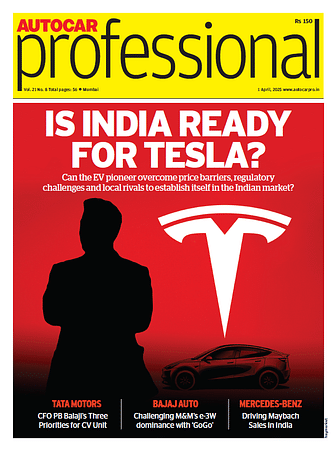How Dealerships Are Losing Millions Due to Poor Car Listings?
Digital-first car buying experiences require high-quality visuals to engage consumers, with dealerships missing opportunities by neglecting online presentation standards.
In the competitive world of automotive sales, first impressions can make or break a deal. A report by Google and Kantar highlights that 95% of consumers buying vehicles start their car-buying journey digitally. This means that before stepping into a dealership, a potential buyer’s first interaction with a vehicle already happens through its visuals.
Yet, many dealerships and sellers fail to prioritize high-quality car visuals, relying on dimly lit, low-resolution photos and unattractive car walkaround videos, that do little to attract buyers and fail to showcase the vehicle’s best features. This has serious financial consequences, as users scroll past good-conditioned vehicles simply because of poor visuals.
A 2022 AutoTrader survey reveals that listings with high-resolution images and good visuals receive approximately 163% higher engagement rates than those with subpar visuals. The automotive industry is evolving, and consumers expect nothing short of magic when investing time in finding a product online. They expect a digital experience that is at par with being physically present in the showroom. If the visuals do not inspire buyers, they will move on to a different dealership.
The Digital Showroom Effect
In today’s world, your website is your digital showroom and the first point of contact with the buyer. However, many sellers consider it an afterthought and end up using low-quality generic images that don’t do justice to the vehicles they are trying to sell. Sellers must understand that bad-quality images lead to bad sales.
According to a Cox Automotive study, 60% of car buyers skip a listing with poor-quality images, even if the price and specifications are appealing. So, if the dealerships have a great vehicle but have poor visuals, regardless of how great the deal is or how excellent the condition of the vehicle is—they’ll end up losing the customer. That’s millions of lost revenue due to a lack of high-quality images.
The Psychology behind Buyer’s Trust: Why Car Visuals Matter?
Psychology further reinforces the power of visuals. Research shows that humans tend to form first impressions in just 50 milliseconds. When an image fails to captivate or convey trust, potential buyers disengage almost instantly.
Moreover, for many, buying a car is an emotional decision. Whether they’re first-time buyers or upgrading to their dream car, they want to see themselves in the vehicle.
Premium brands like BMW and Tesla don’t just showcase cars—they create an experience. Their high-quality visuals evoke emotions of luxury, performance, and innovation. Indian dealerships need to adopt the same mindset—because a car is more than just a product; it’s a dream.
The Financial Cost of Bad Car Visuals
Many dealerships don’t have the budget to advertise in merchandising, but nobody calculates the cost of not investing in it. Every day a car sits unsold on the lot, it incurs hidden expenses to the dealer—from lot space and security to financing interest and remarketing spends. Additionally, an idle car costs the dealer even more in maintenance and overall depreciating value of the vehicle. That’s thousands of rupees lost per car, per day, just because poor visuals delayed the sale. For some dealers, who do spend time showcasing their vehicles using phone photography end up with bad images—leading to low engagement, fewer clicks, and lower lead conversion rates.
Online buyers can’t physically inspect the car. They rely on clear, professional images to build trust. Blurry or inconsistent visuals create doubt, making potential customers hesitant to reach out. So, a vehicle that doesn’t look appealing online takes longer to sell.
What can dealers do to win sales and build a brand?
In a market where buyers make instant decisions, visuals are everything. Dealerships that invest in great visuals aren’t just showcasing cars, they’re building trust and giving consumers an immersive experience. This enables buyers to rely on these dealerships and set expectations that ultimately lead to closing more deals.
Winning the visual game in car sales is not complicated. It requires a more strategic approach and investing time and money in the right tools. There are several startups that are making strides in building technology that have replaced the need for high-end professional studio with AI-powered solutions. These solutions allow dealers to click high-resolution and well-lit visuals that rapidly boost click-through rates, making professional photography a small but impactful investment.
The Bottom Line: Dealers Need to Adapt to Win
The automotive industry is shifting rapidly towards a digital-first buying experience, and dealerships that fail to adapt will continue to lose out. High-quality car visuals are no longer optional—they are a necessity. Investing in the right merchandising strategy will not just help sell cars faster; it will build a strong brand that fosters trust, and enhances the overall buyer experience. The question is no longer “Can we afford to invest in great visuals?”—it’s “Can we afford not to?”
The dealerships that embrace this change today will not only increase sales but also future-proof their business in a market where digital excellence defines success.
Sanjay Varnwal is the co-founder and CEO of Spyne. Views expressed are the author's own.
RELATED ARTICLES
How Electric Vehicles and the Startup Ecosystem Are Driving Innovation in the Fueling Sector
The fueling sector will no longer depend solely on petrol or diesel. Instead, it will evolve into a smart, connected, an...
The Rising Demand for Electric Vehicle in India: An Insurance Perspective
The rapid adoption of EVs in India aligns with a global shift towards sustainable practices. This transformation not onl...
The Role of Artificial Intelligence in Optimizing Electric Vehicle Performance
Electric vehicle sales in India reached a historic milestone, crossing the 2 million mark for the first time in CY2024.






 08 Apr 2025
08 Apr 2025
 1218 Views
1218 Views





 Arunima Pal
Arunima Pal



 Autocar Professional Bureau
Autocar Professional Bureau

